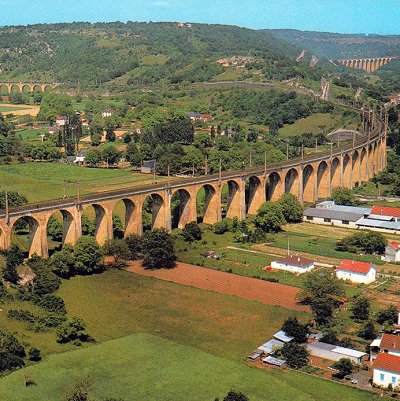
Like us on Facebook
PLACE NAMES


 
|
|
Souillac
|

|
|
Souillac is in the upper Dordogne Valley where the river cuts through the limestone plateau of Haut-Quercy, a historic name for the northern part of the Department of Lot. This is part of the Massif Central, an elevated region in south central France. To the north of Souillac lies the commune of Lachapelle-Auzac, to the east Mayrac and Pinsac, to the south Lanzac, to the south west Peyrillac-et-Millac and Cazoulès, to the west Orliaguet and to the northwest Salignac-Eyvigues, Borrèze and Gignac.
Souillac is a small market town, and is the hub for the area. This is an agricultural region which is known for its walnuts, strawberries and quiet, rural way of life.
The town is on the main railway line from Paris to Toulouse and is about 15 km (9 mi) south of the Brive–Souillac Airport which has international flights. The most notable building in the town is the abbey church of Sainte-Marie. The domed roofs are similar to but rather smaller than those of Périgueux Cathedral. Fragments of the original Romanesque sculptures are grouped just inside the west door. Behind the abbey church is the Musée de l'Automate which has a large collection of mechanical figures and dolls.
An international jazz festival is held annually in the town in July. The festival was started in 1976 by a group of volunteers enthused by Sim Copans, a United States Army non-combatant in World War I who came to live in nearby Lanzac. The festival features live concerts and other jazz-related activities.
The main attraction in Souillac is the Abbey Sainte-Marie. The original abbey was built in the 12th century. Souillac's situation on the road between Toulouse and Paris, on the river Borrèze and close to the river Dordogne led to the development of the town. It was surrounded by a defensive wall with five entrances.
However the town and particularly the abbey suffered in the wars of religion. In the 17th century the benedictine monks rebuilt the monastic buildings next to the abbey. The abbey has beautiful domes in the same style as the cathedral at Perigueux. Inside are some excellent Romanesque sculptures.
The town itself still contains many vestiges of its medieval past and you can pick up a guide from the tourist office or take a guided tour either on foot or on 'the little train'.
 Feel free to Email me any additions or corrections Feel free to Email me any additions or corrections
LINKS AVAILABLE TO YOUR SITE
| | |





